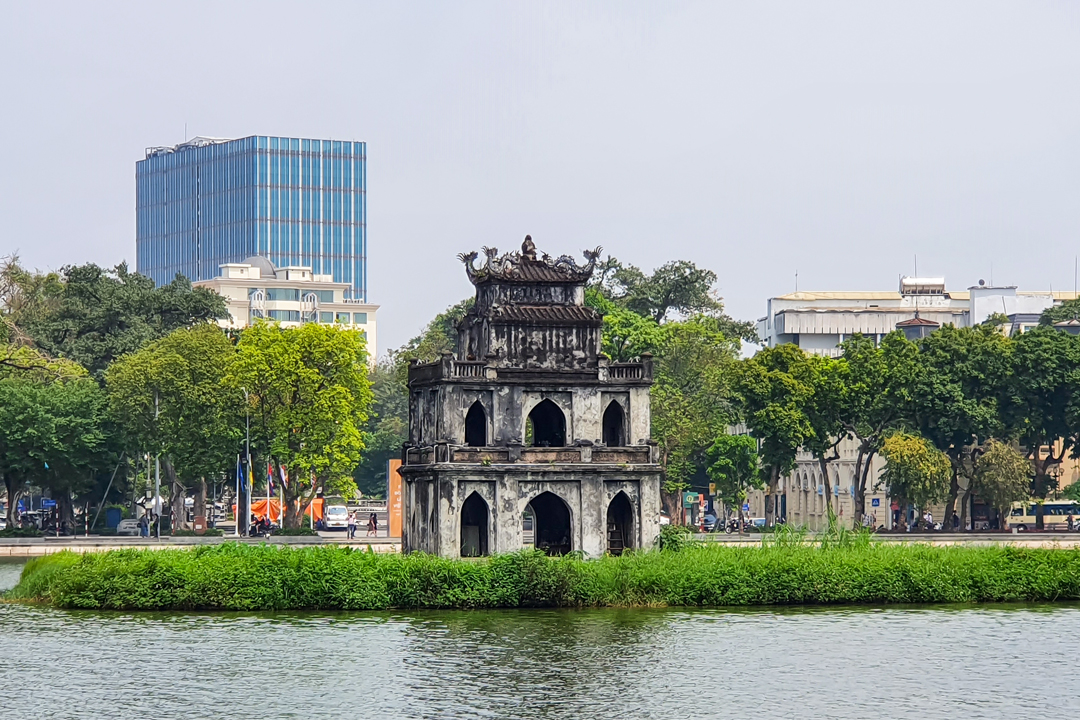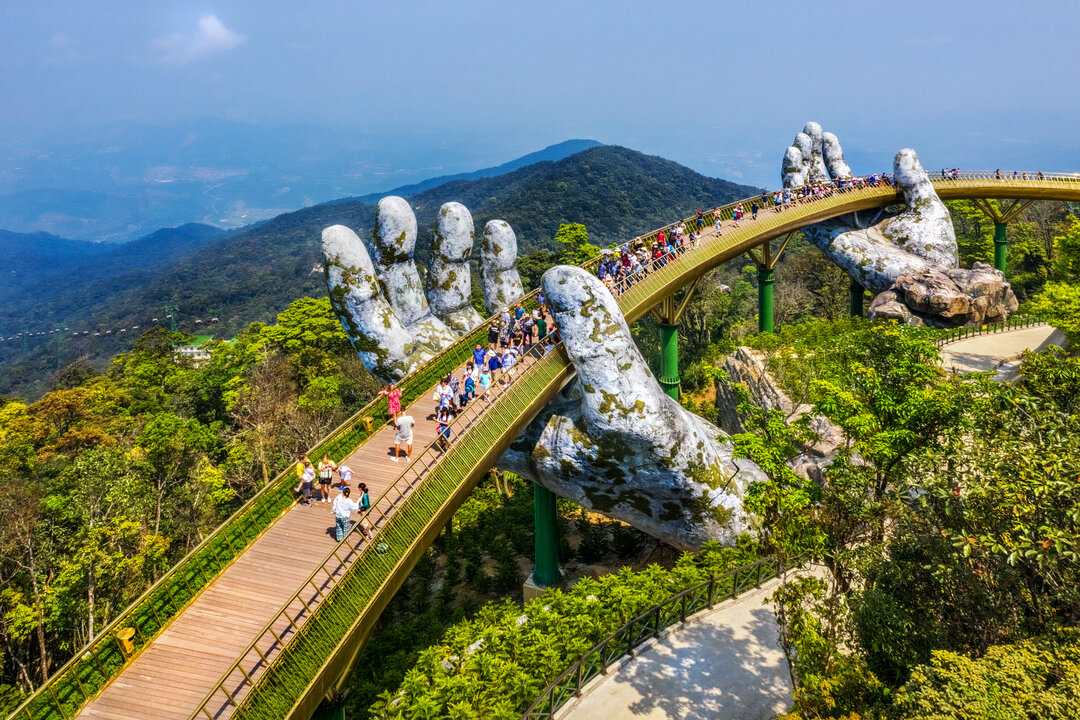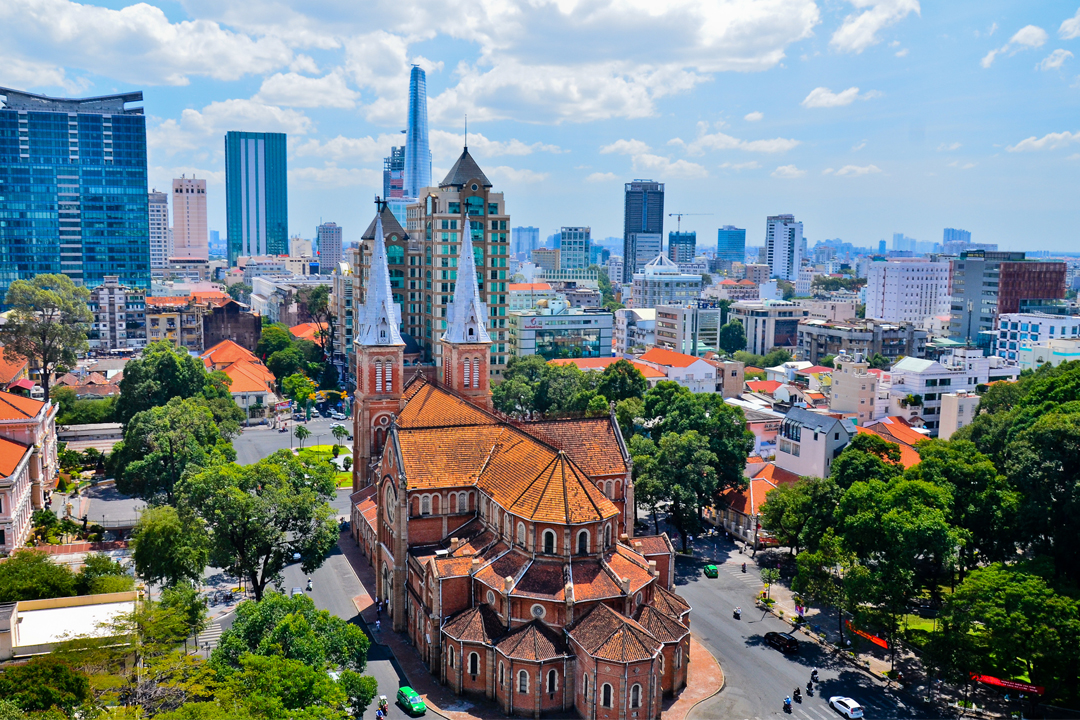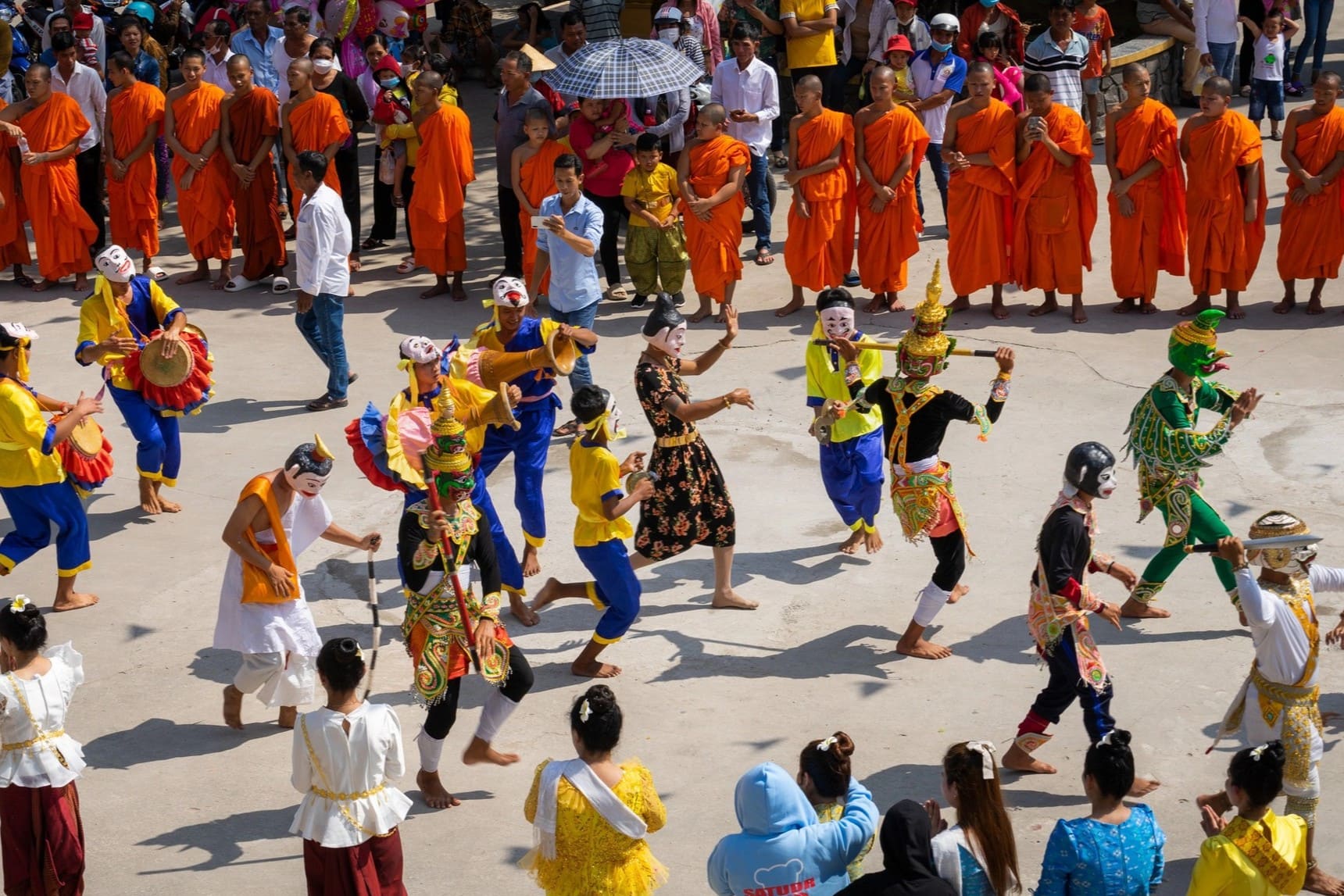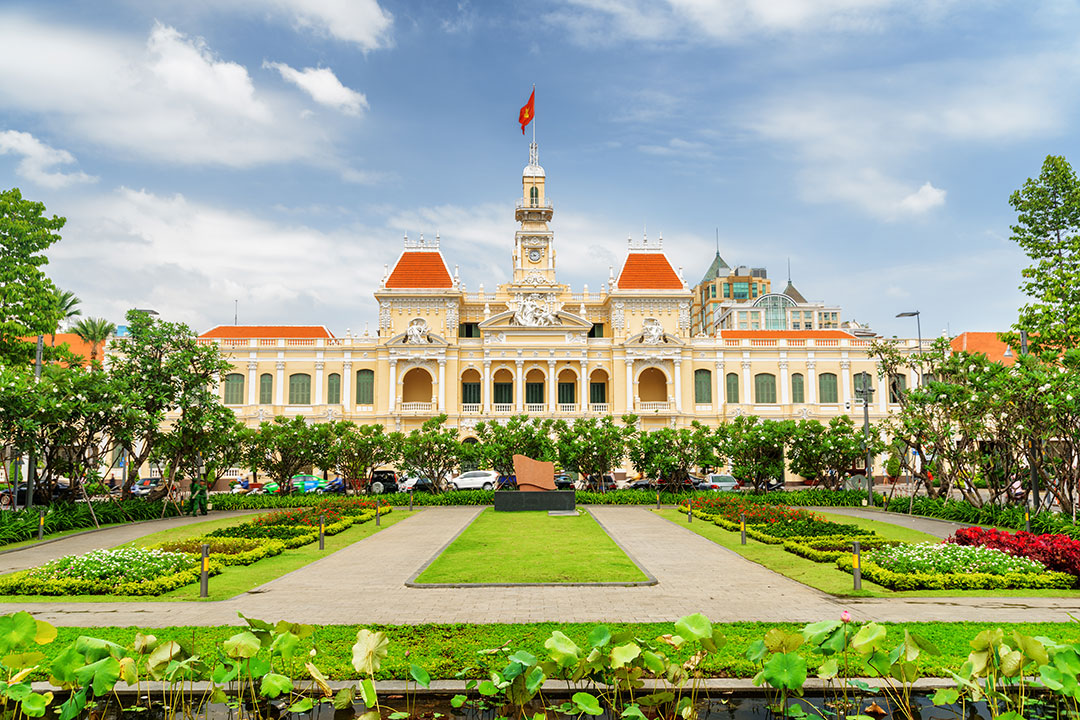Ho Chi Minh City Hall: History, Architecture, Things To Do & Travel Guide
Ho Chi Minh City Hall, located at 86 Le Thanh Ton Street, Ben Nghe Ward, District 1, Ho Chi Minh, is a striking blend of historical grandeur and modern-day relevance, standing proudly in the heart of District 1. Built between 1902 and 1908 during the French colonial era, this architectural masterpiece reflects the opulence of Beaux-Arts design with its ornate facade, arched windows, and iconic clock tower. Its exterior tells a vivid story of colonial ambition and artistic craftsmanship. At night, when the building is illuminated, it transforms into a glowing symbol of the city’s elegance, attracting photographers and architecture lovers alike.
Beyond its visual appeal, the City Hall serves as a powerful reminder of Vietnam’s complex past and its journey into the future. For those drawn to design or curious about the city’s heritage, understanding the artistry and symbolism behind its construction adds depth to any visit.
History of Ho Chi Minh City Hall
Ho Chi Minh City Hall’s history mirrors Vietnam’s dynamic transition from colonial rule to modern independence. Originally constructed during the French colonial era, the building was conceived as a central administrative hub under the name Hôtel de Ville de Saigon. The French administration envisioned an edifice that would reflect the grandeur of European civic architecture while asserting its authority in the region.
The construction of this iconic building began in 1898 and continued for over a decade, finally reaching completion in 1908 and opening in 1909 to celebrate 50 years of French presence in Saigon. Tasked with embodying the aspirations of a colonial metropolis, the project was led by French architect Fernand Gardès. His design integrated advanced engineering methods, such as reinforced concrete construction, which was pioneering for its time and particularly suited to the challenges posed by Vietnam’s tropical climate. The period of construction witnessed a careful melding of function and aesthetics, aiming to create a landmark that could endure both physically and symbolically.
The architectural style of Ho Chi Minh City Hall is a testament to classical European elegance. Its symmetrical facade is adorned with ornate French motifs, and its crowning clock tower stands as a symbol of civic order and authority. The detailed sculptures that embellish the building were initially crafted by Louis-Lucien Ruffier and later refined by Bonnet, further enhancing the structure’s artistic and cultural significance. These features not only highlight the building’s historical and architectural merit but also underscore the French colonial intent to project sophistication and control.
Following Vietnam’s hard-won independence in 1975, the building underwent a significant transformation in its identity and role. Renamed the People’s Committee Building, it shifted from a colonial administrative center to a symbol of national resilience and self-governance. Today, while it continues to function as a seat of local government, the building also serves as a cherished historical landmark. It stands as a living reminder of the city’s layered past, bridging the era of colonial domination with the modern aspirations of an independent Vietnam.
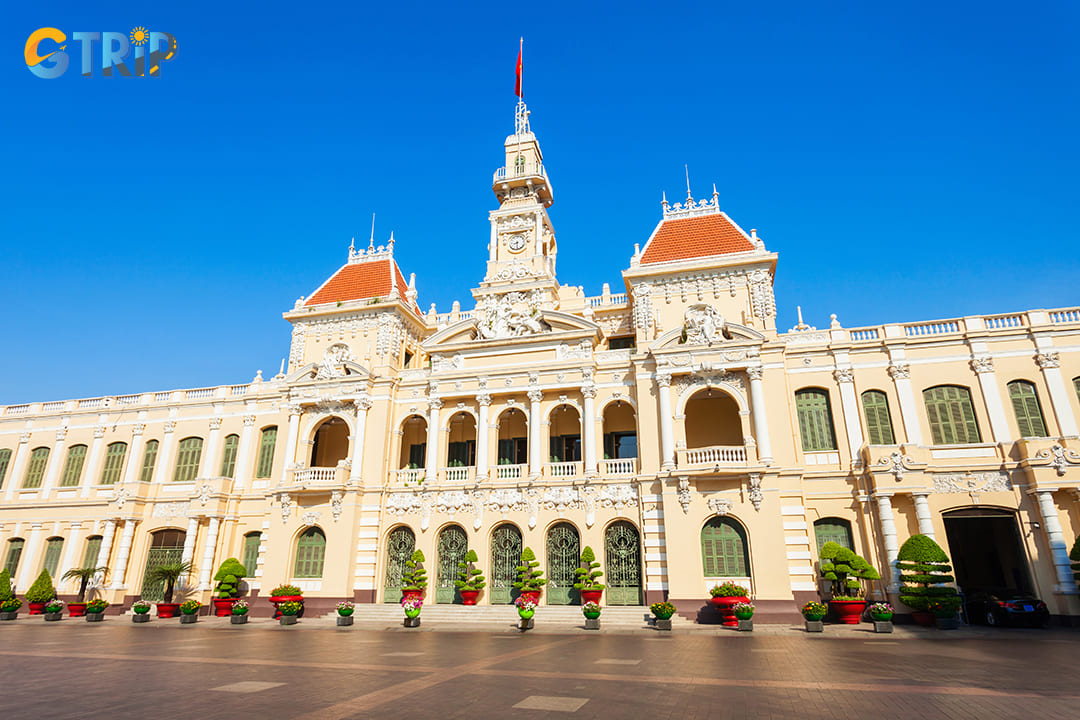
Renamed the People’s Committee Building, it shifted from a colonial administrative center to a symbol of national resilience and self-governance
Architecture of Ho Chi Minh City Hall
The Ho Chi Minh City Hall, officially called the Ho Chi Minh City People's Council and People's Committee Head Office, stands as an exemplary instance of French colonial architecture. It reflects an era where European design principles were married with local construction techniques to create a unique cultural symbol. This analysis delves into the architectural intricacies that define its grandeur.
Exterior design elements and symbolism
Ho Chi Minh City Hall is a striking embodiment of French colonial aesthetics, where European grandeur meets local ingenuity. The building’s facade is characterized by a perfectly balanced, symmetrical layout, a signature trait of classical French design. Elaborate decorative elements such as pilasters, ornate cornices, and finely carved bas-reliefs accentuate its exterior. Stylized floral motifs and wrought iron railings evoke the sophisticated elegance found in Parisian architecture. A prominent clock tower rises above the structure, serving a practical role in timekeeping and also symbolizing the harmony between governance and progress.
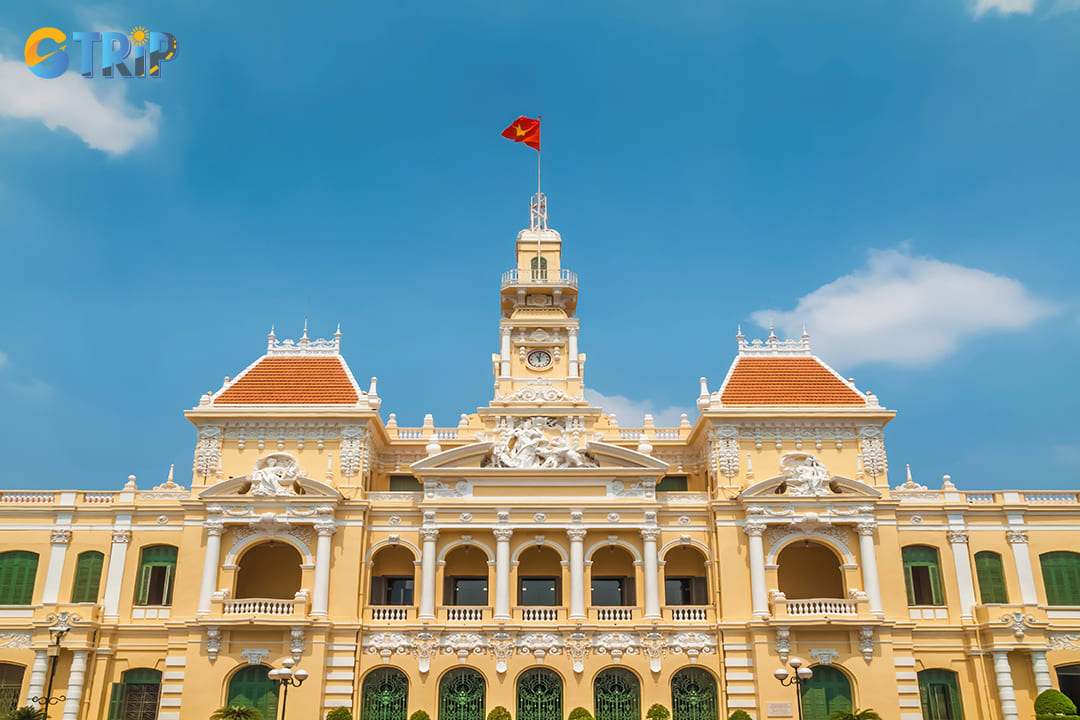
Ho Chi Minh City Hall is a striking embodiment of French colonial aesthetics
Interior features and structural innovations
Inside, the hall continues to impress with a harmonious blend of functionality and opulence. The expansive, high-ceilinged halls were designed to serve the administrative needs of the era while exuding a sense of civic pride and dignity. Structural innovations adapted to the tropical climate are evident in the building’s thick walls and strategically placed high windows. They facilitate natural ventilation and help moderate indoor temperatures. Detailed interior craftsmanship is visible in the intricate ceiling moldings, decorative cornices, and skillfully executed woodwork and tiling. These elements enhance visual appeal and also represent a fusion of imported European techniques with indigenous artisan practices.
Through this lens, Ho Chi Minh City Hall represents a distinct aesthetic lineage and also manifests a tangible link between Vietnam’s colonial history and its architectural heritage. As such, it stands as a testament to the enduring legacy and cultural interplay from an era where architecture was both an art and a political statement. The evaluation of these structures across the country further underlines the spread and adaptation of French architectural principles into the local ethos.
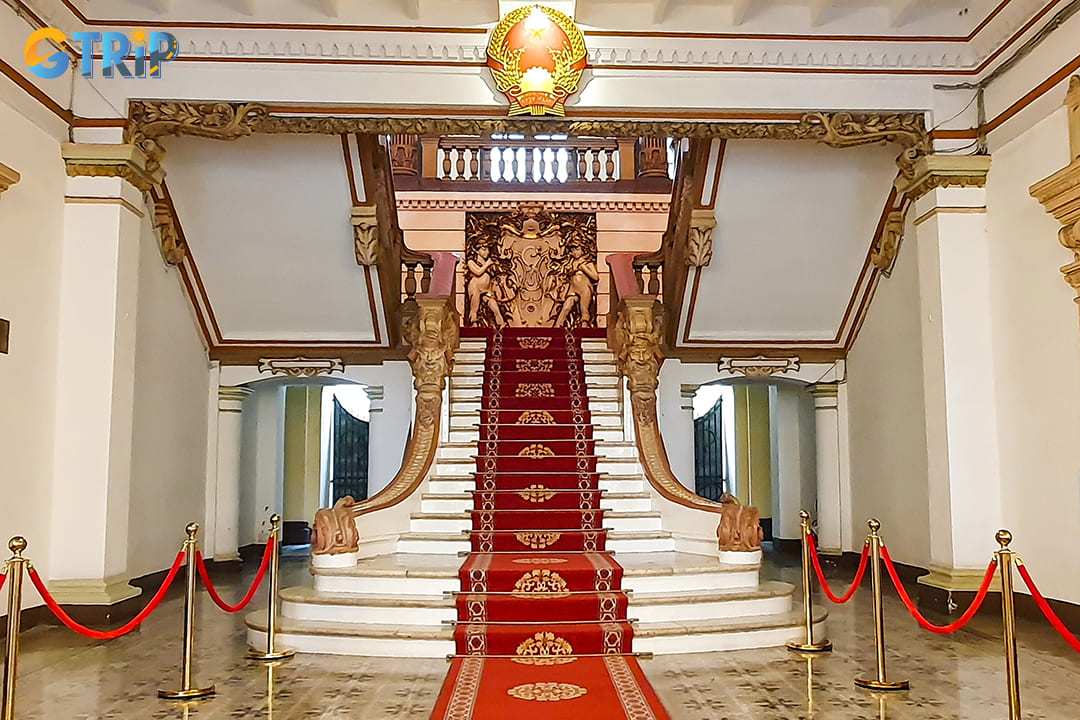
The hall continues to impress with a harmonious blend of functionality and opulence
4 things to do when visiting Ho Chi Minh City Hall
When reaching this hall, you can do some activities such as below.
1. Admire the French colonial architecture
Ho Chi Minh City Hall, officially known as the People’s Committee Building, is one of the most stunning examples of French colonial architecture in Vietnam. The building showcases ornate European-style design, characterized by intricate sculptures, elegant balconies, and a symmetrical facade with a central clock tower. The yellow and white color scheme adds to its charm, reflecting the classical aesthetics of the colonial era.
You can appreciate the exterior’s beauty from Nguyen Hue Walking Street. The best time to visit is in the evening when the entire building is illuminated, creating a magical glow that enhances its grandeur. The structure remains a symbol of the city's rich history and cultural blend of East and West.
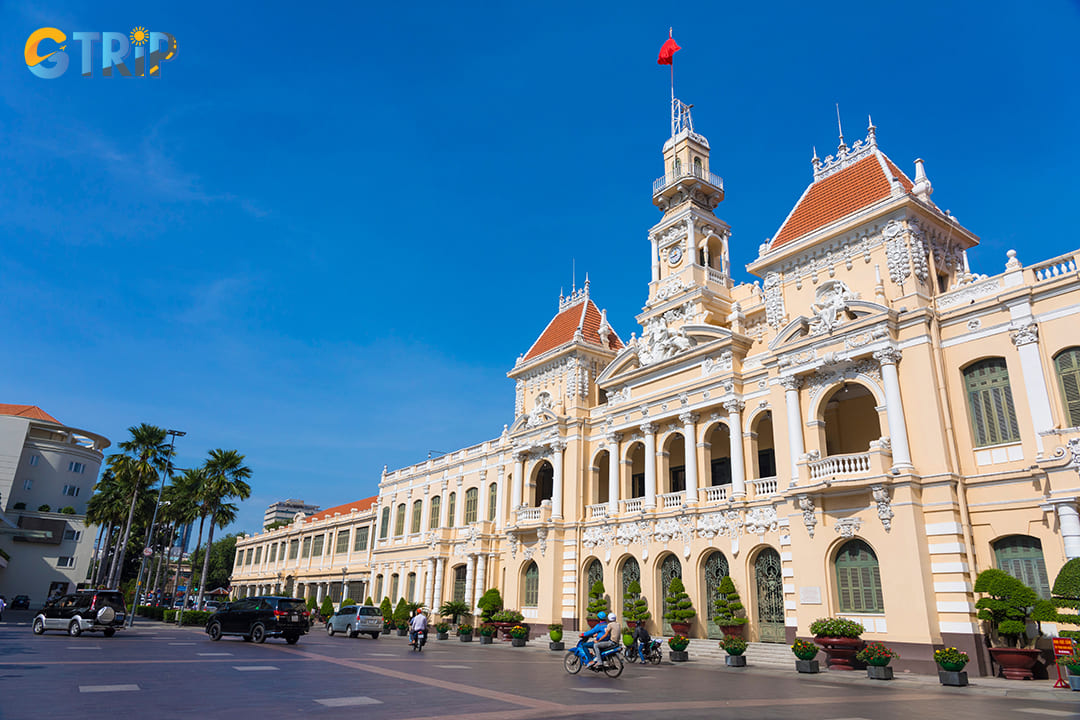
You can appreciate the exterior’s beauty from Nguyen Hue Walking Street
2. Explore the Ho Chi Minh City Hall
The Ho Chi Minh City People’s Committee building is a stunning example of French colonial architecture and one of the most iconic landmarks in the city. Since July 2023, the city’s Department of Tourism has organized free guided tours of the building on the last Saturday and Sunday of each month. This exclusive program offers a rare opportunity to step inside a government office that is usually closed to the public.
During the tour, guests are guided through the grand main hall, reception rooms, and a curated exhibition space showcasing historical documents and artifacts. The experience highlights the building’s architectural beauty and also tells the story of Saigon’s evolution into modern-day Ho Chi Minh City. The tour has been highly praised by travel businesses and cultural enthusiasts for its educational and symbolic value, helping the growth of Ho Chi Minh City Tours.
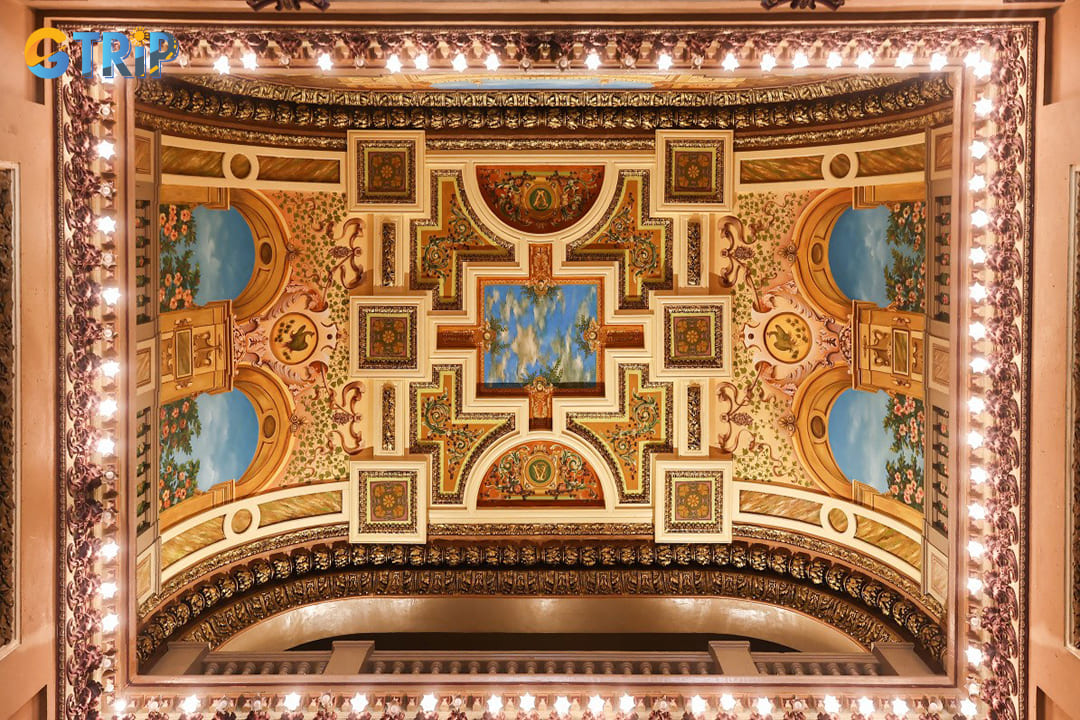
You can witness this beautiful ceiling when joining the exploration tour
To join the tour, participants must register in advance through the official Ho Chi Minh City tourism website (visithcmc.vn). The tour is completely free, but spots are limited, so early registration is recommended. All guests are required to bring identification and dress appropriately for a formal setting. Photography is allowed in permitted areas only.
Important notice: According to the Department of Tourism, the program is temporarily suspended throughout 2025 to allow for maintenance and preservation work on the historic building. This ensures the best conditions for future visits. The reopening date has not yet been announced. Please stay updated through official tourism channels for further information.
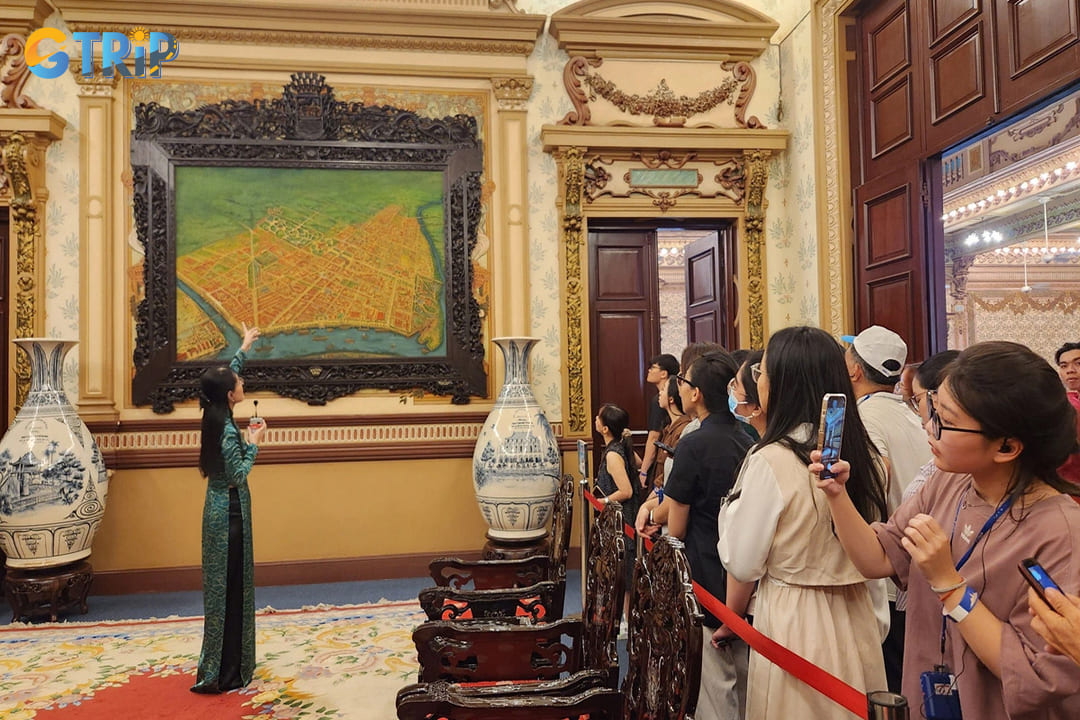
Please stay updated through official tourism channels for further information about the tour
3. Stroll along Nguyen Hue Walking Street
Nguyen Hue Walking Street is a vibrant pedestrian boulevard stretching from the Saigon River to Ho Chi Minh City Hall. The street is lined with modern cafes, restaurants, and historical buildings, making it a great place to enjoy the city's dynamic atmosphere. Local and international tourists often gather here to take photos, enjoy street performances, or relax at one of the many benches along the boulevard. During weekends and special occasions, the street comes alive with cultural events, music performances, and art exhibitions. It’s also a prime location to witness local traditions and enjoy delicious Vietnamese street food from nearby vendors.
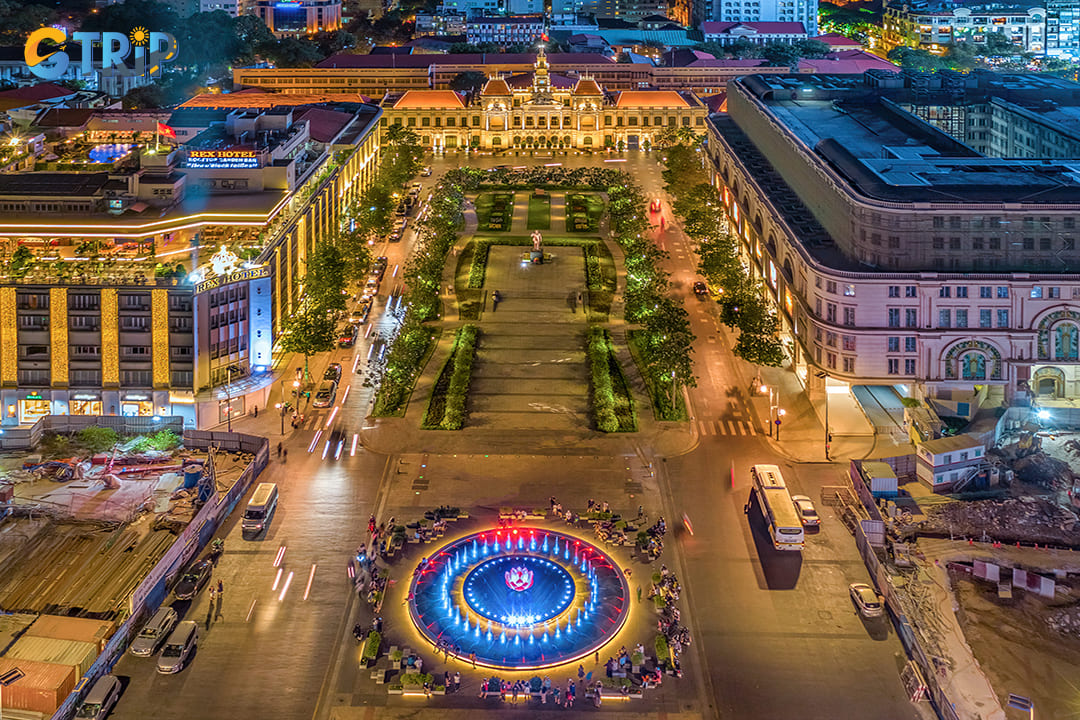
Nguyen Hue Walking Street is a vibrant pedestrian boulevard stretching from the Saigon River to Ho Chi Minh City Hall
4. Visit the Ho Chi Minh statue
A bronze statue of Ho Chi Minh stands prominently in front of the city hall, depicting the revered leader in a welcoming pose with one hand raised. Unveiled in 2015 to commemorate his contributions to Vietnam’s independence, the statue is an important symbol of national pride and historical significance. The statue is a popular spot for both locals and tourists who come to pay their respects and take photographs. Many people leave flowers at its base as a tribute. The open plaza surrounding the statue provides a great vantage point for viewing the city hall and capturing memorable photos of both landmarks together.
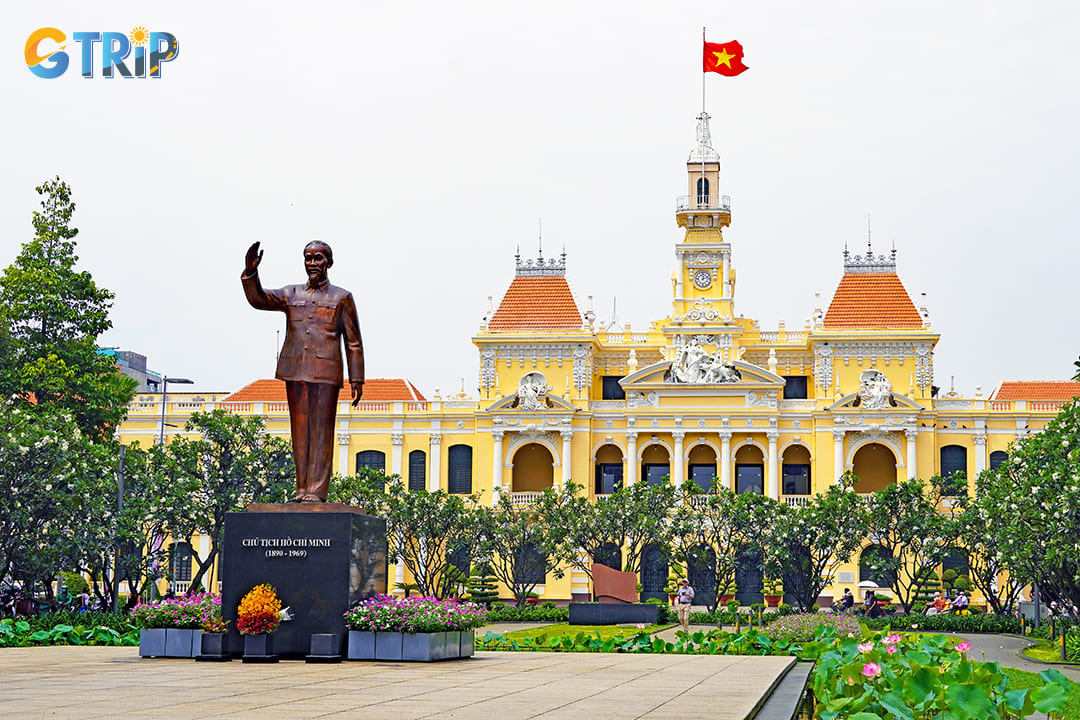
A bronze statue of Ho Chi Minh stands prominently in front of the city hall
5. Capture stunning photos
Ho Chi Minh City Hall is one of the most photogenic landmarks in the city, making it a must-visit for photography enthusiasts. The best place to capture its full beauty is from Nguyen Hue walking street, where you can get a clear, unobstructed view of the entire building. The combination of colonial elegance and modern city life creates a compelling contrast that looks fantastic in photos. At night, the building is bathed in warm golden lighting, making it even more picturesque. For an iconic shot, frame the city hall with the Ho Chi Minh Statue in the foreground.
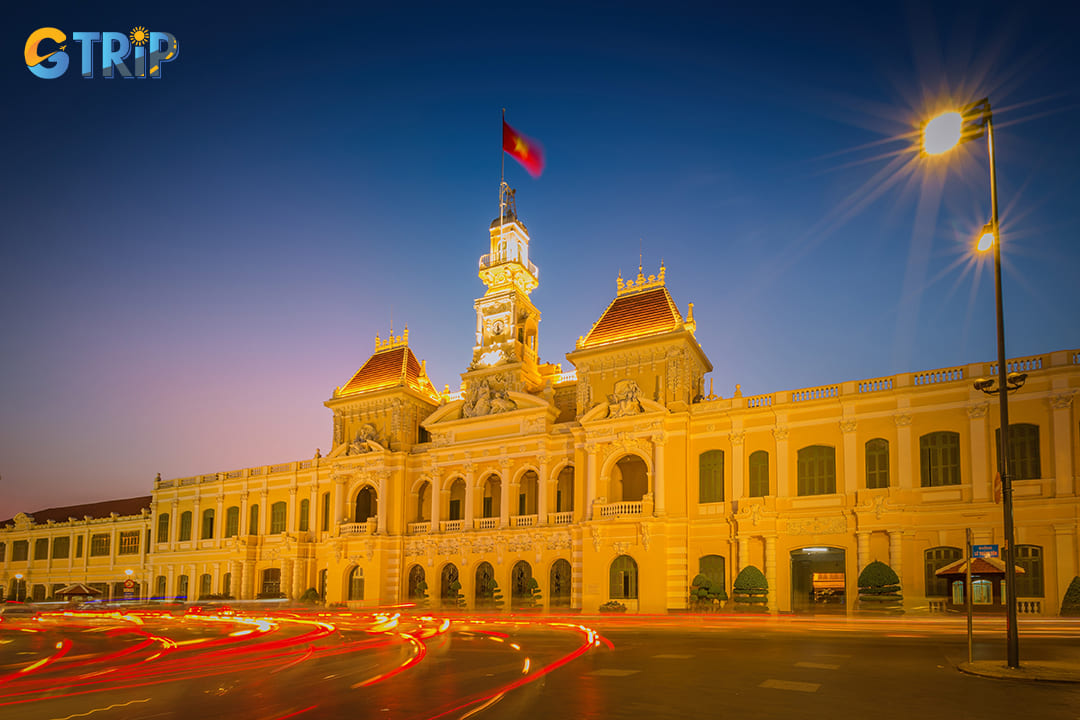
At night, the building is bathed in warm golden lighting
Opening hours and entrance fee of Ho Chi Minh City Hall
- Opening hours: You can visit the exterior from 7:00 AM to 5:00 PM. The best time to visit is at night when all the lights are turned on, which makes the whole place beautiful.
- Entrance fee: There is no entrance fee to view the exterior of the building.
How to get to Ho Chi Minh City Hall?
Ho Chi Minh City Hall is located at 86 Le Thanh Ton Street, Ben Nghe Ward, District 1, Ho Chi Minh City. Situated at the end of Nguyen Hue Boulevard, it is easily accessible by various modes of transportation.
By taxi or ride-hailing services
Taking a taxi is the most convenient way to reach Ho Chi Minh City Hall, especially for those staying far from District 1.
- Estimated duration: Around 4 - 10 minutes (depending on traffic).
- Cost: Approximately $5 to $7 (120,000 - 170,000 VND).
Recommended services:
- Traditional taxis: Vinasun Taxi, Mai Linh Taxi Group (trusted local options).
- Ride-hailing apps: Grab, Be (for affordable and easy booking via mobile apps).
By walking
If you're staying nearby, walking is a great way to reach Ho Chi Minh City Hall while exploring the city's bustling streets.
- Distance: Within 5 - 15 minutes on foot from most District 1 locations.
- Best route: Walk along Nguyen Hue walking street, a scenic and lively boulevard with cafes, street performances, and fountains.
- Ideal for: Tourists who enjoy a leisurely stroll and want to soak in the city’s vibrant atmosphere.
By public bus
Using public buses is a budget-friendly way to reach Ho Chi Minh City Hall, especially for travelers staying outside District 1.
- Bus routes:
- Bus 03, 19, 45, and 53 stop near Nguyen Hue Walking Street.
- Check the BusMap app for real-time routes and schedules.
- Cost: 7,000 - 10,000 VND ($0.30 - $0.50).
- Tip: Buses may not have English announcements, so use Google Maps or ask locals for assistance.
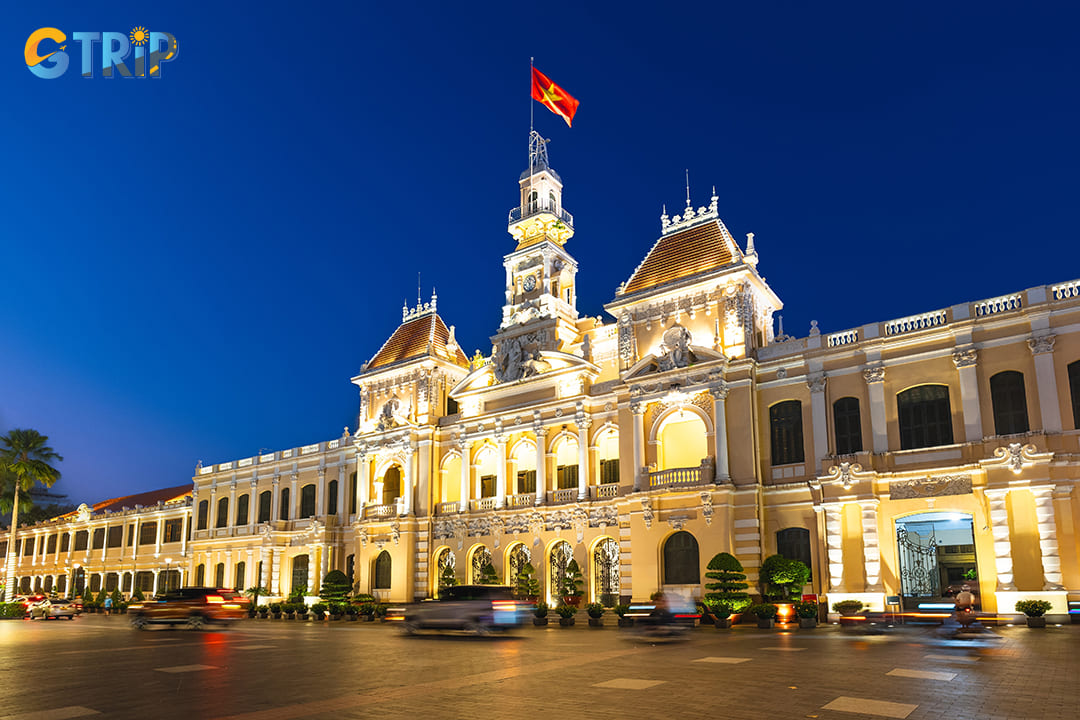
Using public buses is a budget-friendly way to reach Ho Chi Minh City Hall
By motorbike or scooter rental
For a flexible and adventurous way to explore Ho Chi Minh City, renting a motorbike is an excellent option.
- Rental cost: 120,000 - 200,000 VND ($5 - $9) per day.
- Parking: Available at nearby cafés, parking lots, or shopping centers like Vincom Center (5 minutes away).
- Best for: Experienced riders comfortable with Ho Chi Minh City's traffic.
By cyclo
For a unique and leisurely ride, consider hiring a cyclo (Vietnamese rickshaw) to take you around the area.
- Cost: 50,000 - 150,000 VND ($6 - $12) per hour.
- Experience: A slow-paced ride perfect for sightseeing and taking in the city’s historic charm.
- Tip: Negotiate the price beforehand to avoid overcharging.
No matter which mode of transport you choose, reaching Ho Chi Minh City Hall is easy, with plenty of opportunities to enjoy the city’s vibrant streets along the way.
Nearby attractions to explore from Ho Chi Minh City Hall
When visiting Ho Chi Minh City Hall, a journey into the surrounding area offers a deep dive into the vibrant history and culture of Vietnam. Each nearby site has its unique charm and significance, making it a must-see for any traveler.
Saigon Central Post Office (500 m)
Located just a short walk from Ho Chi Minh City Hall, the Saigon Central Post Office is an architectural gem designed by Gustave Eiffel. Completed in 1891, this Victorian Gothic building is a testament to the city's thriving colonial past. Its arched windows, wooden shutters, and vaulted roof draw tourists into a bygone era. As an operational post office, it still serves both locals and tourists, offering a unique blend of functionality and history.
You can marvel at the intricacies of its design while exploring the numerous souvenir shops inside. A notable feature is the large portrait of Ho Chi Minh, which adds a touch of Vietnam's modern history to the colonial setting. For those interested in philately, the central post office also offers a range of commemorative stamps.
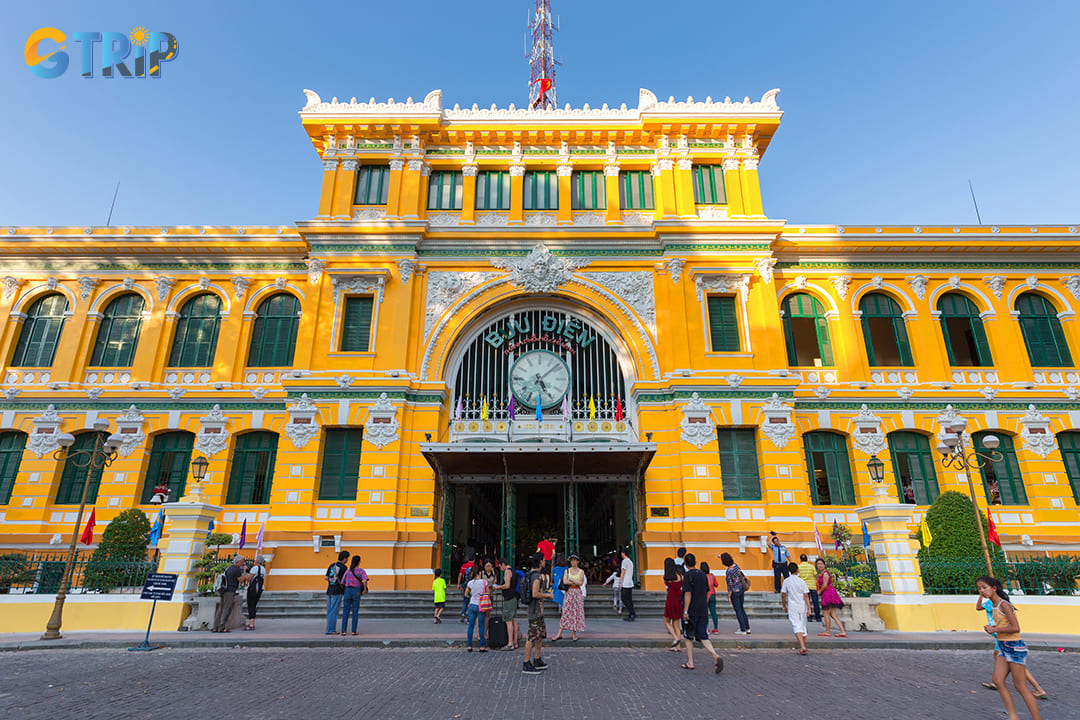
The Saigon Central Post Office is an architectural gem designed by Gustave Eiffel
Notre Dame Cathedral (450 m)
Adjacent to the post office stands the Notre Dame Cathedral Basilica of Saigon, a building that resonates with the whispers of history. Its construction began in 1863, and by 1880, the cathedral became a symbol of Catholic influence in the region. The red brick facade, imported from Marseille, and twin bell towers reaching heights of 58 meters, make the cathedral reminiscent of its Parisian counterpart.
Inside, you are met with a quiet, spiritual atmosphere and can admire the stained glass artworks that tell biblical stories. Though the cathedral remains active for services, it is also a major attraction for those seeking to understand the religious dynamics of Vietnam. Tourists often linger outside, surrounded by manicured gardens that offer respite from the bustling city.
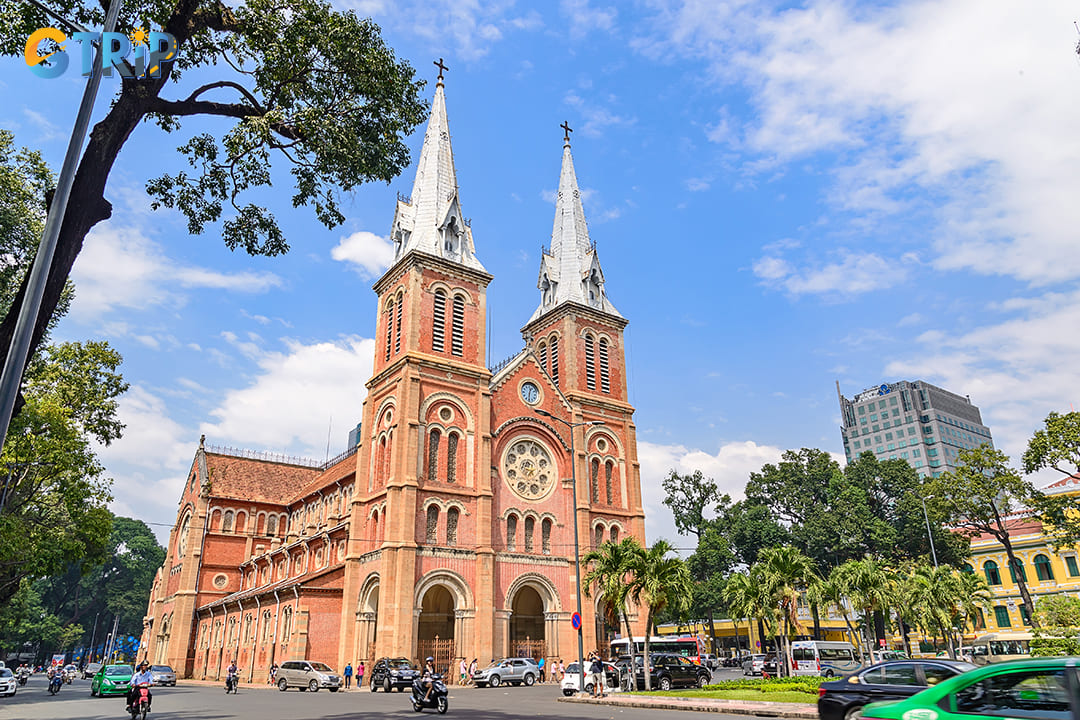
The Notre Dame Cathedral Basilica of Saigon, a building that resonates with the whispers of history
Independence Palace (800 m)
A little further away, the Independence Palace is pivotal in Vietnam's historical tapestry. Originally the Norodom Palace, it became a symbol of the Southern Vietnamese government until its fall on April 30, 1975, marking the end of the Vietnam War. The palace’s architecture is a blend of mid-20th-century modernism with traditional motifs. Each of its rooms tells a story of past political decisions and historical watershed moments. Guided tours take tourists through the president’s office, banquet halls, and the famous war room in the basement.
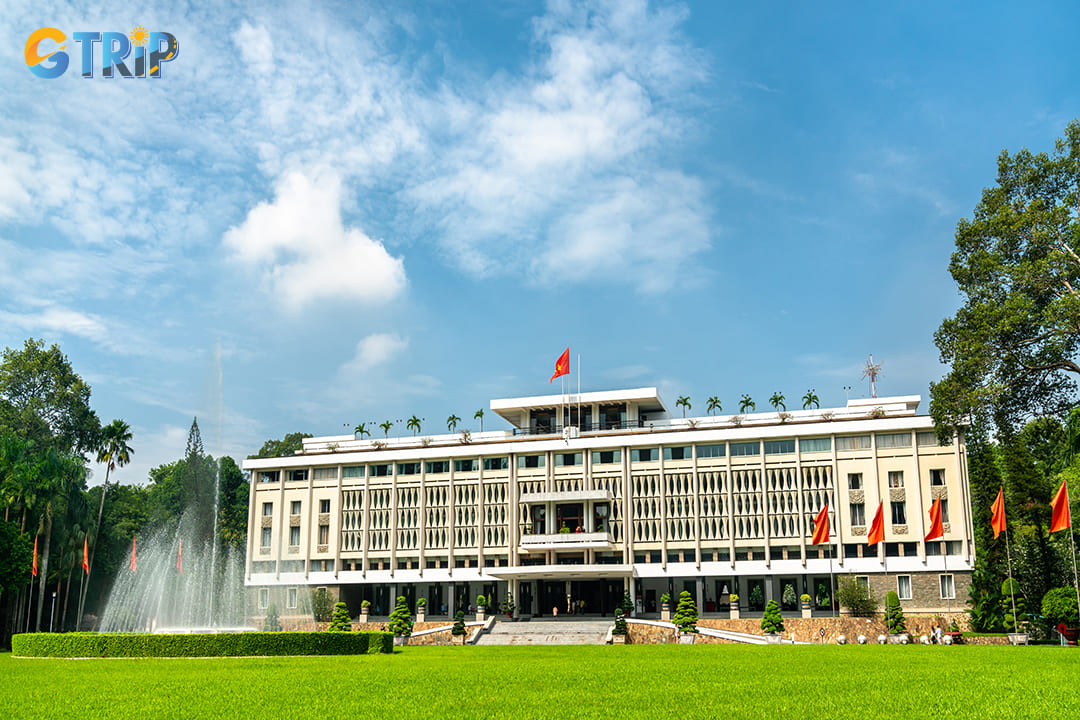
The Independence Palace is pivotal in Vietnam's historical tapestry
Ho Chi Minh City Hall serves as a bridge between the past and present, offering a multidimensional experience that encompasses history, architecture, and culture. It stands as an indispensable component of Vietnam's urban landscape, inspiring both locals and tourists to delve into its rich narrative. Photography enthusiasts will find the hall particularly compelling, especially in the evening when the building is illuminated. To make the most of your time in the city, consider joining a curated tour with GTrip - Vietnam Travel Agency.
Our Ho Chi Minh City tours offer authentic insights, expert guides, and immersive experiences that bring the city to life. Ready to explore Ho Chi Minh City in a whole new way? Book your tour with GTrip today.

